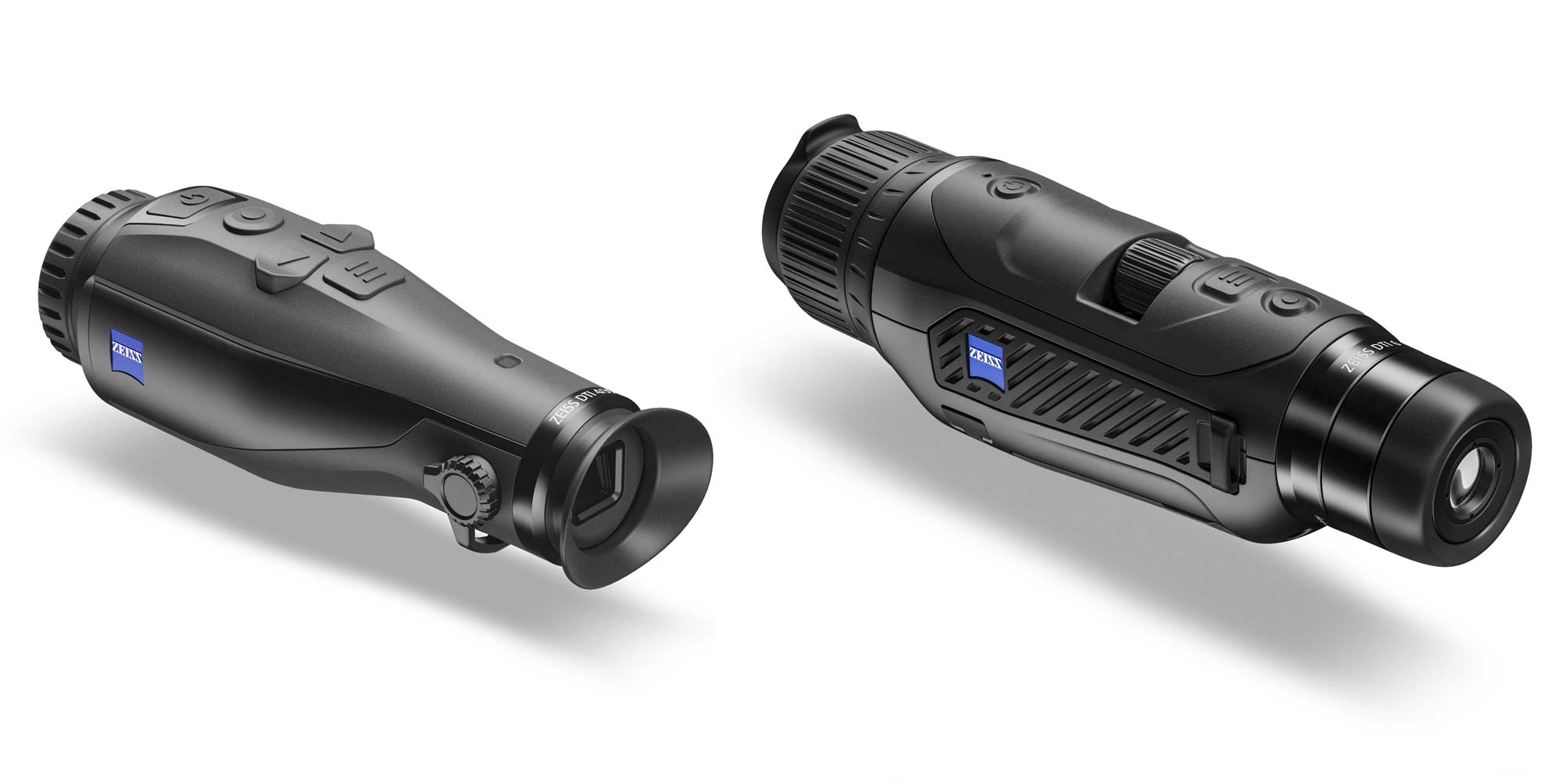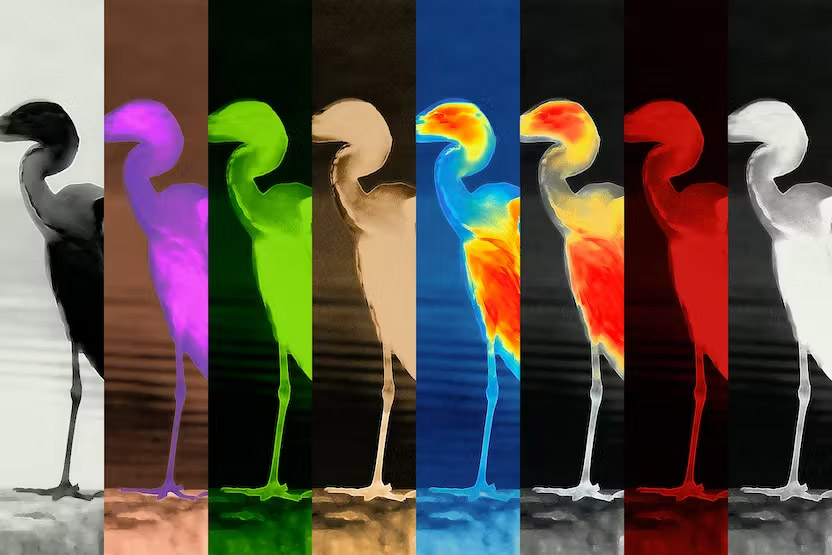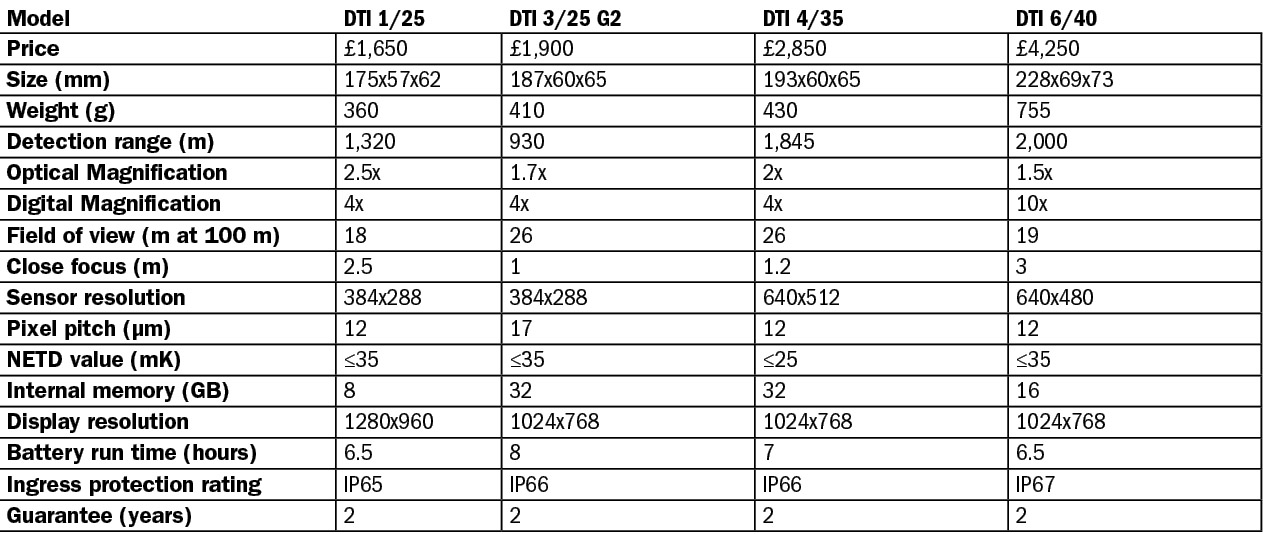ZEISS DTI 1/25, 3/25 G2, 4/35 and 6/40 thermal-imaging cameras
Rapidly gaining ground and enjoying growing credibility in the birding community, thermal-imaging devices are now being used for a variety of purposes, ranging from nocturnal surveys and ringing to locating specific birds in the field during the hours of daylight.
ZEISS has been producing thermal-imaging monoculars since autumn 2020. More recently, in July 2023, it expanded the range to include the four models reviewed here.
These models were initially developed for hunters to track and identify animals at night but, as recent sales have proven, their ability to locate hidden birds and other animals during the day has shifted their balance of use and more generally broadened their appeal to wildlife enthusiasts.
The three smaller models (1/25, 3/25 G2 and 4/35), developed by ZEISS but manufactured in China, are all similarly sized and follow the same basic design.
While the complexity associated with the understanding of functionality and field use in thermal-imaging products sits high above conventional optics, these three models are simple to operate, making them easy to use – so much so that the learning process can be quickly achieved intuitively in the field, even before referring to any printed instructions.
Manufactured in Germany, the larger DTI 6/40 is a different animal entirely, offering a greater level of functionality, as well as a higher digital magnification, the latter arguably putting it on a par with many everyday binoculars.

ZEISS has recently released four new thermal-imaging cameras. Illustrated here are the DTI 4/35 (left) and the DTI 6/40.
Irrespective of magnification, though, the images produced by all four models are heat-related and effectively electronic. Therefore, they are in no way comparable to those delivered by conventional optics.
Each model is solidly built, rubber-armoured above and below in the areas in contact with the user's hands. There is little variation in weight between the three smaller models but at 755 g, the 6/40 is more than twice as heavy as the 1/25, making it necessary to use two hands to hold it steady when viewing. All models are equipped with screw ports on the underside, enabling them to be used with a tripod.
Close to these are the ports which double for connecting each one, via a USB cable, to a computer or a charging plug. The 6/40's port is located on the side of the body and it is the only model which has a removeable battery that can be independently placed in a charger (not supplied). Rubber stoppers seal the ports when not in use but it should be noted that all models are designed to be weather resistant but not completely waterproof.
On the left side of the body and close to the ocular of each of the three smaller models, there is a milled wheel with a small finger protrusion, which effectively acts as a dioptre and allows sharp, positive focusing of the internal screen. Focusing on the subject in view is achieved by rotating a milled, rubber-covered wheel around the objective lens.
The 6/40 lacks this wheel, instead offering a more conventional dioptre adjustment in the form of a rotating ring around the ocular, the solid eyecup twisting out to click-lock positively in three positions above the base setting in the same manner as most binoculars.
The three small models have soft rubber-contoured eyecups which are shaped to block out any intrusive side light and these are very comfortable against the eye. All have a non-removeable tethered rubber objective cap, which is pleasingly flexible and does not flip up to impede vision when hanging below the lens.
The controls are located along the top of the body and, with the exception of the on/off button, all are slightly raised, responding positively to single-finger contact, even when wearing gloves. Working from the distal end, situated immediately behind the objective lens is the on/off button, behind which is the shutter button – a single press of which captures an image, while a longer press initiates video recording. It is also possible to capture single images during recording with a further single press.
Two adjacent 'arrow' buttons sit behind the shutter, allowing the user to toggle backward and forward between the different values of digital magnification. Behind these sits the button controlling the viewing mode and for accessing the on-screen menu, scrolling and selections from which are made by using the 'arrow' buttons.
The controls on the 6/40 are slightly different insomuch as a recessed, milled wheel rotates to adjust the magnification, in units of 0.5x from 2.5x to 10x but more finely between 1x and 2.2x, and the button for camera operation sits immediately behind the ocular. Furthermore, the mode button, when held down, opens up the on-screen menu which can be scrolled by rotating the above wheel, while items to be adjusted are selected by depressing the mode button.
Images taken with this model can also be viewed immediately afterwards without having to port them to a connected device such as a computer or mobile phone.
The menu varies from fairly basic choices in the smallest of the models to a rather wider and more variable offering in the 6/40. Adjustments can be made to image brightness, contrast, scene, viewing-mode calibration, hot tracking and connectivity via Wi-Fi or Bluetooth, while system details can be viewed for the model being used.
Eight choices of viewing mode are those most likely to be toggled between and these are White Hot, Black Hot, Red Hot, Rainbow, Red Hue, Green Hue, Dark Hue and Night Eye. When using any of these devices at night, users should be aware that they are likely to suffer from 'black eye' or temporary partial blindness in one eye through looking at a bright screen in a dark environment. The last four of these colour modes were specially developed to reduce the glare of the screen and relieve eye strain.

AEach of the eight choices of viewing mode offers its own colour scheme for 'seeing' heat. These can be quickly toggled between and it's down to individual preference as to which the operator chooses to use.
Mode can be selected depending on habitat and viewing conditions – such as fog in the 6/40 – as well as on personal preferences. Red Hot is my 'go-to' choice across the models as, to my eye, it shows up the greatest contrast between the source of heat and an otherwise monochrome background. In this respect, it was interesting to see the different heat signatures given off by different birds. As well as being able to detect Eurasian Coots in and behind areas of Phragmites, it also revealed their hottest parts were their heads. Nearby Gadwall, however, appeared to be almost uniformly hot.
Other birds were detectable in near darkness. Using the 4/35 on the lowest magnification, Redwings roosting in a thick hedge were clearly visible at
60 m, while hares bounding about in a rough field and invisible to the naked eye were also clearly identifiable. The screen also showed the differentiation between a Barn Owl and a Short-eared Owl which were both hunting at dusk in the same area.
White Hot and Black Hot also stood out as offering pleasing alternatives in a different dimension to Red Hot and I also like the 'hot tracking' menu option – a red square which moves across the screen, homing in on sources of heat within the viewfinder. I was not impressed with Rainbow as I felt it was too gaudy and completely over the top. On several occasions I experienced 'screen freeze', which necessitated turning off the power and rebooting.
It's worth mentioning that this device allows smartphone connection, from which the camera can be operated remotely.
While thermal-imaging devices occupy an important niche, at the end of the day the choice of model very much depends on its intended primary use. Unless you are a serious hunter or continually undertaking surveys, where perfection is paramount, then the investment in the top-of-the-range 6/40 represents an unnecessarily high expense for even the keenest birder.
For simple detection by day, the three smaller models are perfectly adequate, the 4/35 to my eyes offering the best images. However, even this model is expensive considering it is not mainstream birding equipment. That said, all models deliver a pleasing user experience.
Each is supplied with a soft carry case and strap plus neck strap and USB connection lead for viewing images on a laptop and charging. The two-year guarantee can be extended to three years by registering the product within four weeks of purchase.
Technical information



